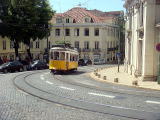Metro and commuter trains in Lisbon
A fast public transport network in Lisbon is metro as its main artery,
connecting the city centre with the upper
and eastern districts, and now reaching the suburbs. The major railway stations of commuter train lines are
Santa Apolonia, Rossio and Gare do Oriente.
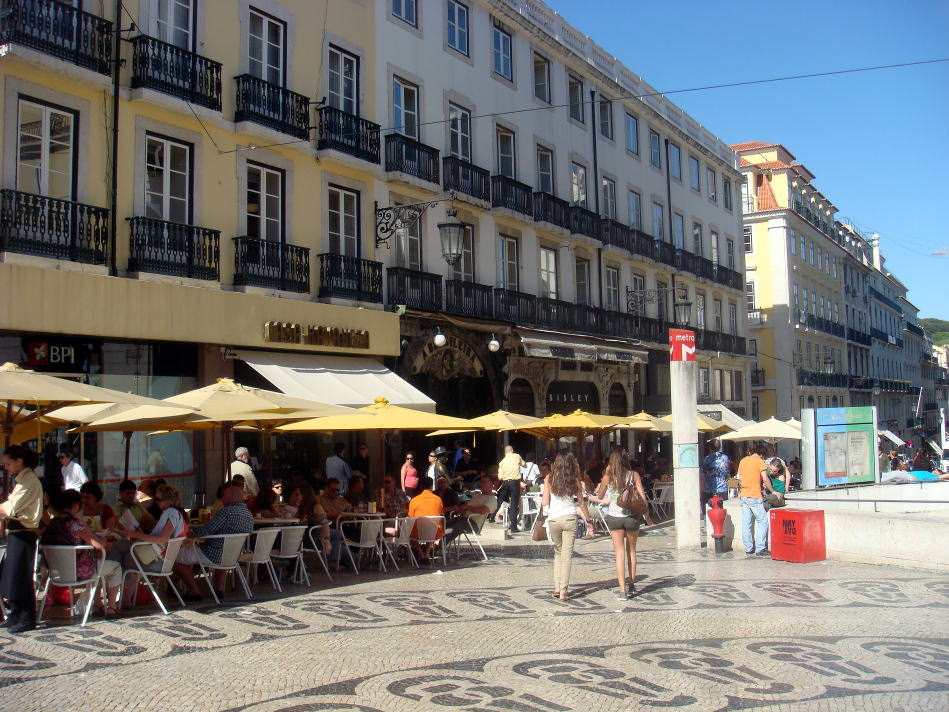
Baixa is an elegant area in the city center of Lisbon. The surface is paved
with a decorative pattern of tiny black and white stones.
 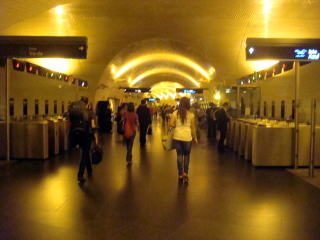 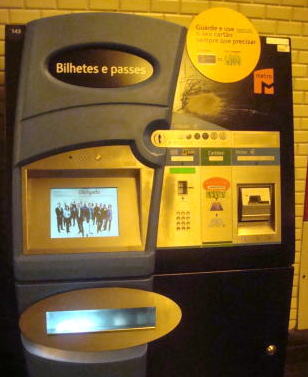
(L) Metro sign at the entrance to the Rossio station (M) Ticket gates at
the Baixa-Chiado subway station
(R) An automatic bending machine for a Metro ticket sale at the Baixa-Chado
station
 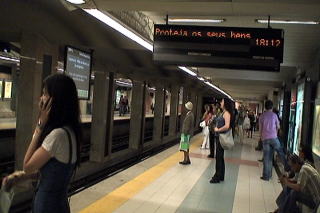
Baixa-Chado underground station
 
These map show a metro route in Lisbon. The terminus major station for
the red line is Oriente, and the blue is Santa Apolonia.
 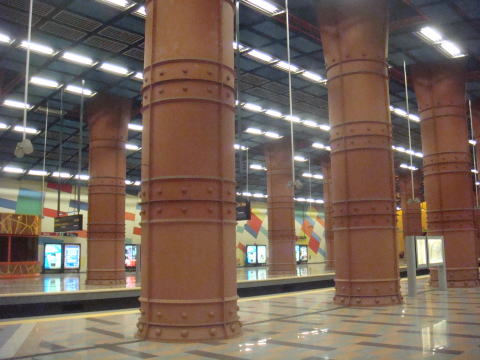
(L) A view from the upper slab walkway above the Alameda Metro station
(R) Large columns support a wide space underground at the plateform of
Olaias station.
 
The Olaias station, Lisbon
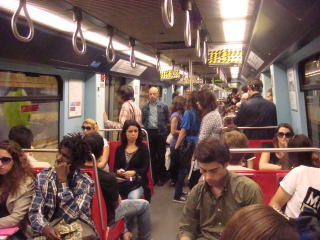 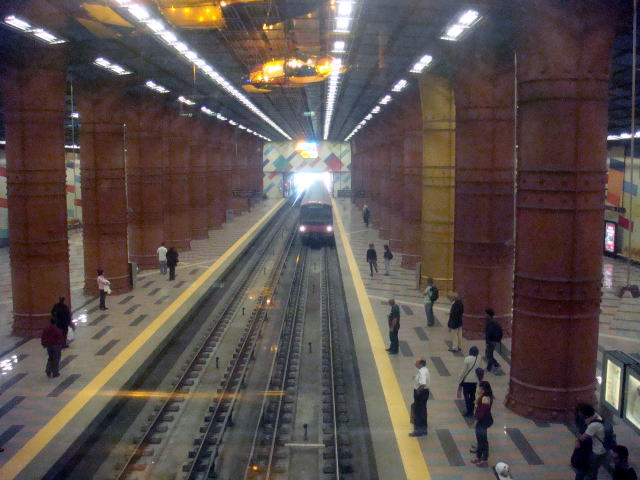
(L) Passengers of Lisbon Metro train (R) A subway train is now entering
to the underground Olaias station.
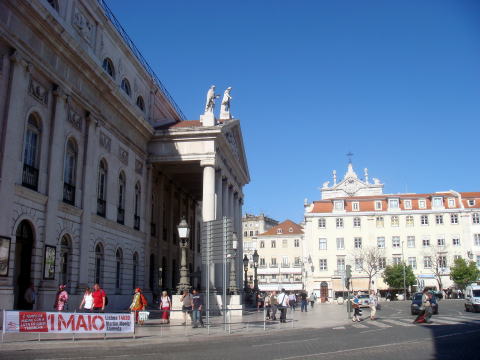 
Rossio Railway Station at the Rossio square is an important example of
Romantic and Cast-iron architecture in Portugal.
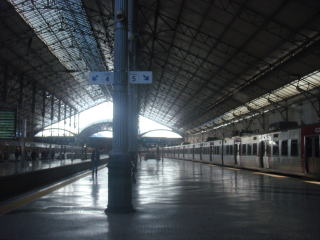  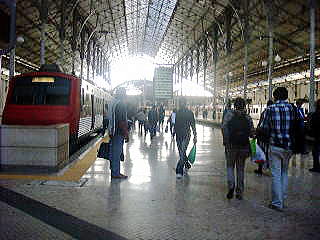
A covered plateform of Rossio station on the upper level of the building
 
(L) Information display at the Oriente station (R) The Oriente train station
and the National Association for Cruise building
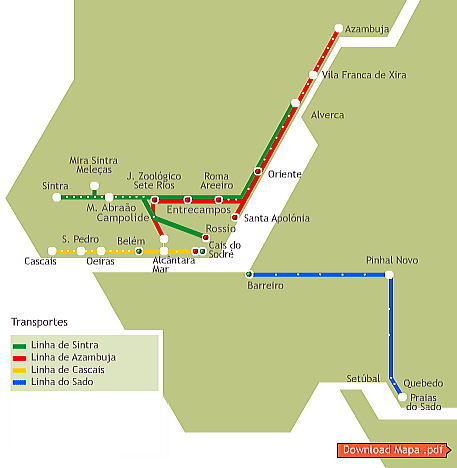 
(L) Commuter rail route map in Lisbon ( Source: Companhia dos Caminhos
de Ferro Portugueses )
(R) A double-deck commuter train running between the Orient and Alcantara
stations
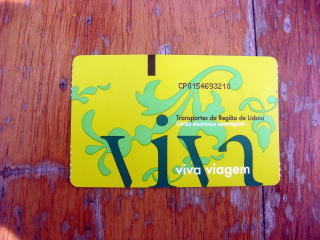 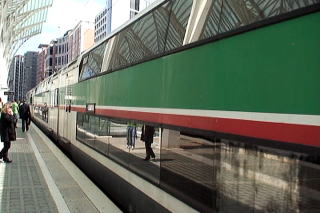 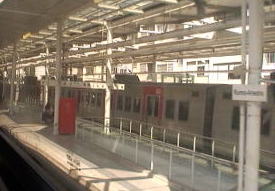
(L) A train ticket issued at Oriente station in Lisbon (M) A commuter train
entering the Oriente station (R) Roma Areeiro station
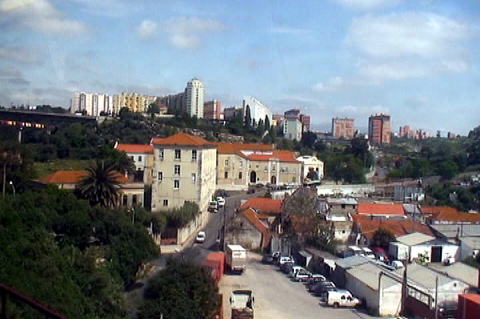 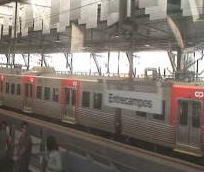 
(L) A view of Lisbon town seen between the Oriente and Roma Areeiro stations
(M) Entrecampos station (R) Sete Rios station
 
The surounding of Campolide station
 
(L) Campolide station (R) A historic aqueduct in Lisbon, well viewed from
the site near the Campolide station.
Photographed in April-May, 2010.
The Aqueduct of the Free Waters is a historic aqueduct in the city of Lisbon.
It is one of the most remarkable
examples of 18th-century Portuguese engineering. The main course of the
aqueduct covers 18 kms, but
the whole network of canals extends through nearly 58 kms. The project
was paid for by a special sales tax
on beef, olive oil, wine, and other products. Construction of the aqueduct
started in 1731. A total of 35 arches
crosses the valley, covering 941 m. It is considered a masterpiece of engineering
in the Baroque period.
The 'Mother of the Water' reservoir of Amoreiras, the largest of the water
reservoirs, was finished in 1834.
リスボンで市民の足となっているのはメトロ(地下鉄)と近距離地点を繋ぐ通勤、郊外型電車である。地下鉄は機能的で
速度も速く短時間に市内での移動が可能である。近郊電車は地上を走行するのでリスボンの市街地の様子を見るため
にはよい。ポルトガル鉄道のカンポライド駅近くには、あまり知られていないが、18世紀に肉、オリーブオイルや
ワインなどに課せられた付加税によって建設された歴史的構築物、水道橋を間近に見ることが出来る。
 Railway Travel around the World
Railway Travel around the World
All railway trains should be completely smoke -free.
 Smoking ban in the railway trains of the world Smoking ban in the railway trains of the world
鉄道全面禁煙化は世界の常識
 Smoking status in Portugal Smoking status in Portugal
Portugal
 Portugal Portugal  Lisbon city Lisbon city  Lisbon metro and railways Lisbon metro and railways  Lisbon tram Lisbon tram  Lisbon-Porto express train Lisbon-Porto express train  Porto train station Porto train station
 Porto metro Porto metro  Porto city Porto city
 リスンボン地下鉄およびポルトガル鉄道 リスンボン地下鉄およびポルトガル鉄道
 2010年5月執筆 医学博士 宮本順伯 2010年5月執筆 医学博士 宮本順伯
★ This Web site is link-free.
This information was provided by the Smokefree Hotel and Travel.
The article was written in May, and photographs were taken in April-May,
2010、
by Junhaku Miyamoto,M.D.,PhD.
Copyright(C) 2010 Junhaku Miyamoto, All rights reserved.
|
